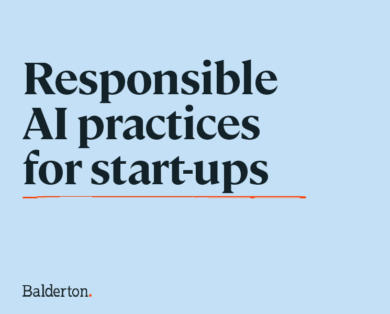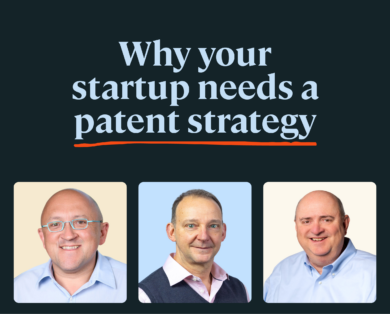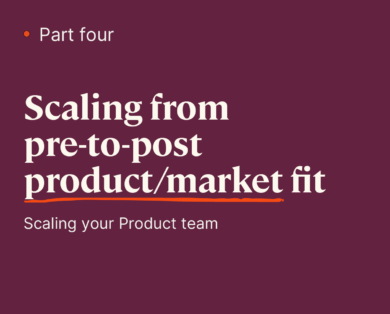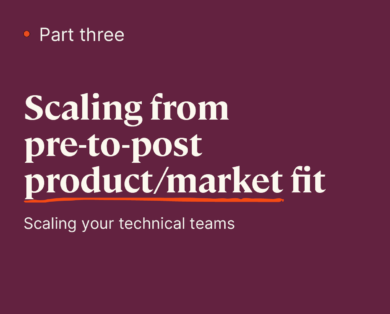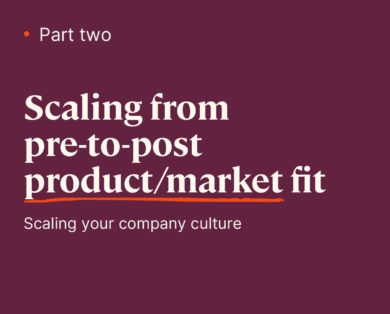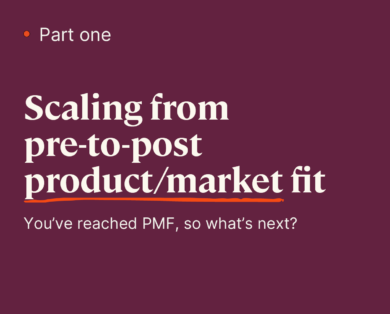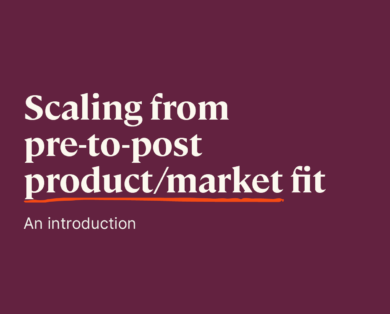- 15 January, 2025
This post was originally shared on James Wise’s Medium

It’s a follow-up post to ‘The Funding Round is Dead’.
As capital becomes a commodity in early-stage tech investing, founders face increasing inbound contact from angels and venture investors. But with a record number of new funds, it’s not feasible for founders to take every Skype call, or attend every investor coffee, whilst still running a business. So how do you deal with the inbound, and build and keep relationships with the investors that may one day matter to you?
The companies we work with are responding in various ways, from adopting a policy of complete transparency on all metrics, to hiring full-time investor relations managers. Founders need to survive this barrage of investor interest while still building relationships. Doing so requires measured amounts of both transparency and directness.
Be transparent, to a point:
One way of dealing with constant investor interest is to open up all your metrics and simply point interested parties at your public dashboard. This is already broadly practised, led by companies like Buffer and with sites like Baremetrics offering tools to make it incredibly simple to achieve. It makes dealing with inbound interest easy, as all that’s required is a canned email response with a link to your dashboard. If what they see matches what they invest in, they’ll come back with a serious offer.
The challenge with this approach is that metrics alone don’t tell the entire story. Having an internal dashboard is fine for you, as you know the context around that revenue drop in mid-June, but the rest of us don’t. An investor could see a perfectly explicable anomaly and run a mile. If you’re using a public dashboard, remember that data without context is pretty useless. Adding context to these numbers, and highlighting key milestones and areas where you need support, not only gives you more control over how people understand your numbers but also helps highlight the less tangible parts of your business and engage investors even if they aren’t yet ready to write a cheque. Companies like Ghost do this publicly, but you can do it via private emails as well.
Be direct, to a point:
The point of raising venture capital is not only to get access to high-risk capital (and the high valuations that come with it) but also to gain a partner who will help you build your business. This means you do need to talk with investors at some point, to assess whether they would really be useful partners. But, of course, it’s not feasible to do this by talking to every single investor who knocks at your door. So how do you pick the right one? Some entrepreneurs and groups have attempted to simplify this procedure by creating anonymous feedback forums, in which founders share their experience of working with particular principals & partners.
However in a market with 100’s of new entrants these lack a lot of information, and suffer from the ‘ I hate all investors, except the ones that invested in me’ fallacy. Instead, you want to build up a list of potential partners over time, keep them informed without spending too much time in coffee shops, and see if and how they help you as you grow before you take capital from them. This will make it much easier to judge who to engage with when you do decide to take meetings.
A template for engaging with VCs:
The method which we’ve seen work well, and which I recommend to new companies, is regular investor update emails. These cover some metrics, provide some context, and suggest areas that the investor community can help. This email is sent to a distribution list of all the associates, principals and partners that have reached out to you, or that you have met at conferences or meetups, and retains the same monthly format and timing. Ultimately, it replaces the need for that first 60-minute call or meeting and helps you build a better sense of who is worth engaging with in future. There are plenty of companies who do this well in different ways, but a common theme looks like this: (NB I have been told to mention that this is a fictional example, please don’t make trades based on the below… )
From: [email protected]
Hi Investor,
Welcome to Apple’s monthly update email, we’ve added you as someone we thought was interested in the company, let me know if you want to be taken off this list.
What we did this month:
- We pushed an OSx update, fixed a few bugs
- Opened 10 new Apple stores (Hi Belgium!)
- Wrote a letter about China
Key milestones for next month:
- We’re launching the 6s model, prep looks good and I’ve had my blue shirt dry cleaned
- Apple TV will be updated (this is slightly delayed)
- Finishing off El Capitan, due for launch in next 4 weeks
Areas you could help:
- We’re a little concerned about currency exposure, do you know any experts in the Renminbi?
- We want to talk to Elon Musk about Tesla in case you can make an introduction.
- We’re hiring testers for the next iPhone model, big hands welcome.
KPI progress:
- Q3 revenue was $50B ( 33% YoY growth )
- Sold 15M iPhones in July, 5% below target as everyone was spending money on the ultimate travel jacket
- Hit target for Apple watch sales
Why does this work?
Regular updates, like the one above, have a few powerful psychological factors. Regularly receiving emails like this will cement you into an investor’s frontal cortex. This means you’ll get more air time when they’re talking to their colleagues, other investors and journalists about companies they know. It also creates a sense of progress as they can see you moving towards your goals each month, which is crucial for long-term investors like VCs, who expect to work with you for 5–10 years. Finally, it allows them to understand that there is more to the business than the J-curve they will usually look at in the pitch deck.
For you, this method pays dividends across the board. It means you don’t have to spend hours on Skype with well-meaning junior associates, just say you’re busy and offer to put them on the mailing list. It means you can set the context around your monthly data, so you don’t get judged on a single month-on-month growth number. AND it means you can ask the investor community for help before they invest a cent. Most VCs are genuinely keen to provide support, and even if they can’t spend days a month supporting non-investments, you will undoubtedly get responses when possible.
There are a few tricks with an update of this style. Make sure you are consistent. Only sending out your newsletter on good months, or if you have a big win, quickly raises suspicions about your company. Instead, start sending it early, as receiving just one email before you decide to take capital isn’t particularly useful. And don’t put anything in there you wouldn’t be happy sharing with all of your employees, as while investors rely on a reputation of confidentiality, leaks happen.
And finally, feel free to add me to any updates you’re already sending!
NB Much of this post was inspired by the teams at 3DHubs & 8fit, who have used the above approach to great effect. The Coding VC also has a good example here.
 JAMES WISE
JAMES WISE 

